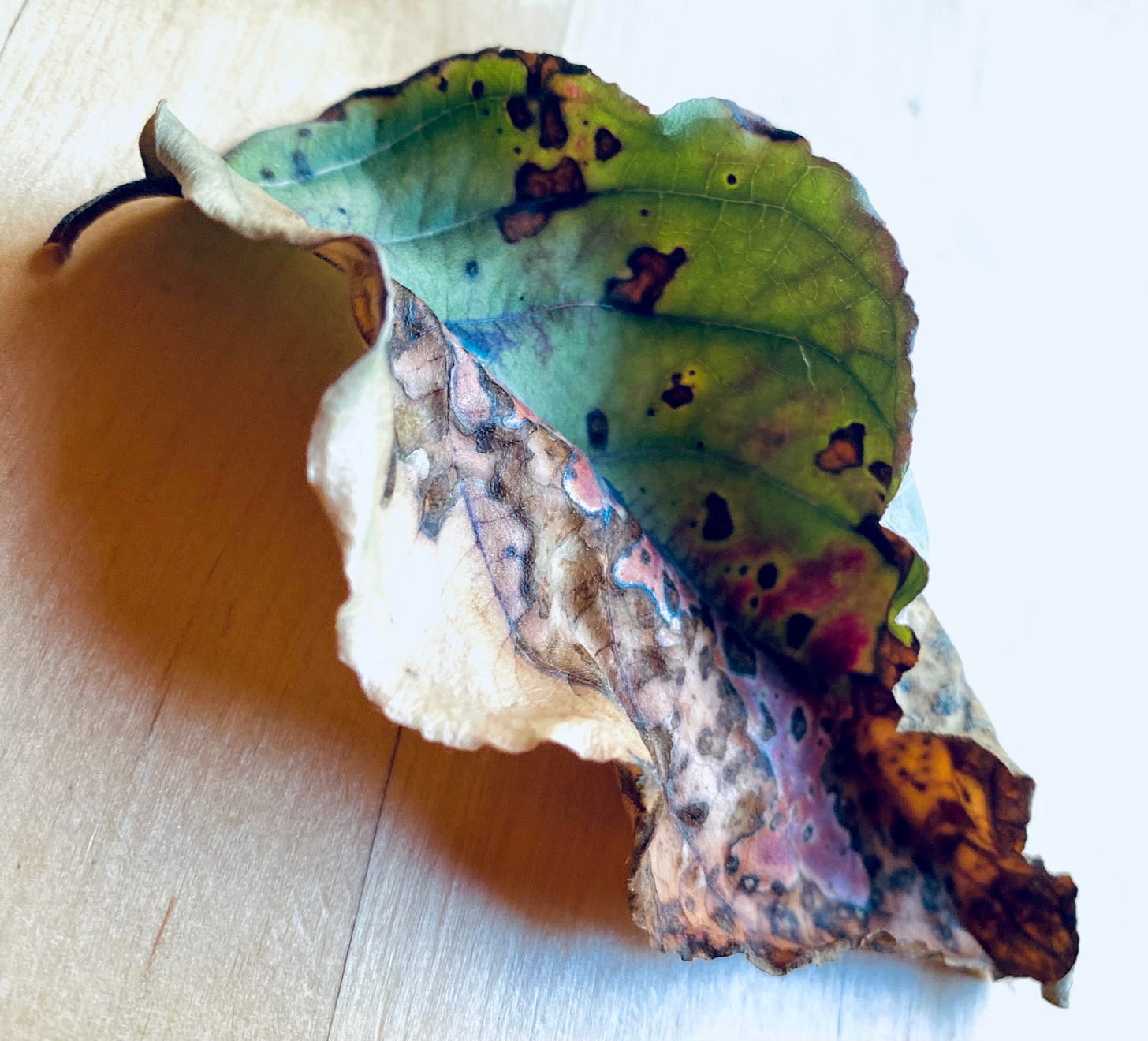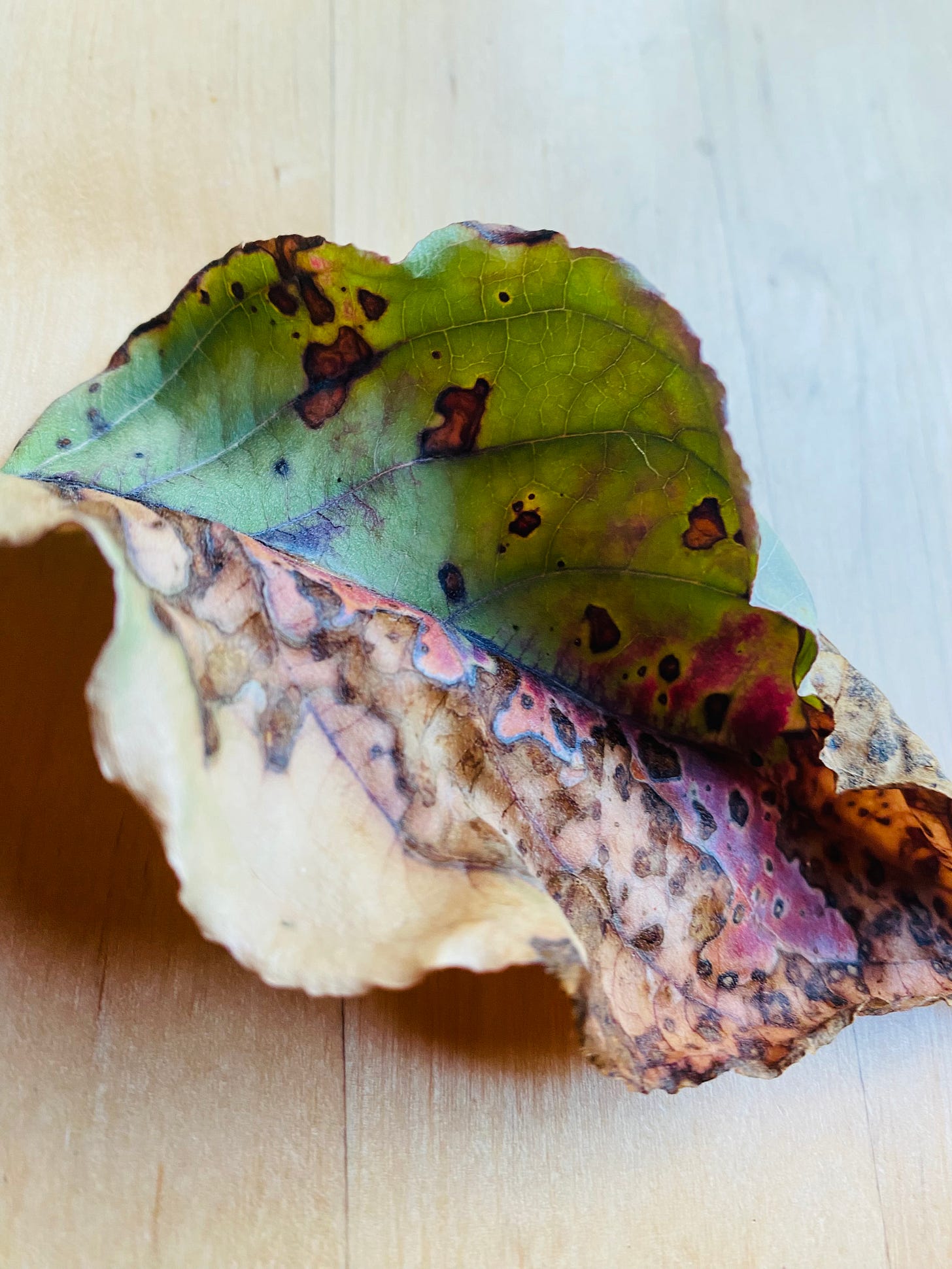A Love Letter to Resistance
From nausea to temper tantrum, avoiding what is in the here and now
We all have minds that dish out judgements. Often to ourselves and likely as often toward others. Mine is no different. My meditation teacher Rob Burbea says it’s “not a problem.” Nor any thought, sensation, negative perception of ourselves, or our experience. None of it is a problem, as long as we look at it all as the “play of appearances”.
In his book Seeing that Frees, Rob elucidates how we can use different “ways of looking” to help free ourselves from the illusions that keep us confined within narrow, harmful perceptions. His intention is to help us become free of suffering that is caused by these illusions (or delusions) and to live sacred, beautiful, ethical lives. The challenge is that we don’t see how our thinking is based on illusions, and thus, we believe to be true what is actually just a passing thought. Not only that, our actions are then influenced by these thoughts we believe are true.
We could ask where the thoughts come from. The Buddha taught that there are six senses for us to be mindful of: the five usual ones (sight, smell, taste, touch and hearing) and the sixth one being thinking. Just as our ears hear and our eyes see, our minds think. “Not a problem,” Rob says, as long as we recognize that “thinking is occurring” and have enough mindfulness that we can refrain from believing the content of the thinking. This is why we practice meditation. To cultivate a mindful awareness that enables us to see our thoughts without believing them.
I have been a student of Buddhist insight meditation for 25 years. I am still a student, will forever be. As a sangha sister recently articulated. “We remember and we forget. In order to be free we have to keep remembering.” That’s why we meditate, study, practice. Through meditation, we get to know not only the content of our thoughts, but the whole process of thinking, and how it works. We also get to know patterns of thought such as worry, fear, planning, past-ing, futuring... Each pattern of thought leads to patterns of behaviour. Behaviour that can yield much suffering for ourselves and others.
Judgement, comparison, anxiety, aversion, greed… these mind-states are some of the patterns in the mind’s repertoire of thinking. Since we all have them, there is no shame in having these patterns of thought, nor in thinking them. As the title of a book by psychiatrist Mark Epstein suggests, it is not us who is doing the thinking, but the mind that has a “mind of its own”.
In Buddha’s Brain, neurologist Rick Hanson acknowledges the mind’s negativity bias, how on autopilot the mind tends to veer toward judgement, criticism, wanting what isn’t rather than appreciating what is. Practices like gratitude, lovingkindness and compassion help us to retrain the mind toward empathy, which psychotherapist Miriam Greenspan, author of Dealing with the Difficult Emotions: The Wisdom of Grief, Fear, and Despair, says is the gold of healing.
I help him pull up his underwear and put on his shorts, and he tells me it is hard for him to see himself so needing my help.
In my first post from What the Day Holds I said “I don’t know how to be a caregiver.” Although I have never taken a course, never cared for children, I have cared for myself, Gregory, students, friends. So I am drawing on all my experience, while listening and responding as best I can. Allowing myself to take instructions, from sister caregivers, friends, Gregory and other members of the support team we have been putting in place (art therapist, social worker etc…).
Sometimes it is not easy. I get defensive. I hear thoughts like “this is not what I want. this sucks. I can’t do it.” Thoughts like “I want the whole thing to end. To go away. There are so many other ways to be in the world. Other ways I would prefer.”
I also have feelings, nausea being the predominant one, that alert me to a sense of resistance, not wanting to do all “that needs be done,” to quote my friend Yael Wand’s beautiful song from her album Saltwater Heartwood.
The other night, a woman I know said something so striking to me. She had read my previous post and was offering her support and empathy. Then, about her work in the world, she said “It’s all about service.” A remembering occurred upon hearing her words. I had forgotten. Caring for Gregory is service.
The thoughts, about not wanting to be a caregiver,
“this is not what I want.
this sucks.
I can’t do it.
I want the whole thing to end.
are just that.
Thoughts.
I don’t have to believe them nor judge myself for thinking them. I also don’t have to identify so completely with the “role” of caregiver, to “reify it as the self” Rob would say. Give it wings, I imagine him saying. Let it bloom into image. Let it be multidimensional, unfathomable, beyond.
What image could I give to this role of caregiving, so that it nourishes me?
The other afternoon, in a conversation with a dharma sister, I discovered I could see myself as the handmaid Dulcinea to Gregory as Don Quixote from Man of La Mancha. I heard her say: “Gregory is responsible for his experience. You are not responsible for how he feels, how he responds. You can care for him, but don’t try to control him. Let him be with his experience.”
Another way to see it: “I let you be where you are and as you are.” A phrase she offered me from equanimity practice.
Monday afternoon our social worker came to our home. We spent two hours exploring our caregiving journey as a couple and individually, enumerating the ways he is needing and receiving my care. When I acknowledged all the ways (and hours) I am emotionally and physically in service to Gregory, she said there are other caregivers who are doing way more. Supervision, she called it, where they have to be watching their person all the time, monitoring them constantly. I don’t have to do that, nor get him fully dressed, washed, drive him around.
There are over a million unpaid caregivers in the province of BC, states a flyer from Family Caregivers of BC. A million, in service to those who need care.
I have been in relationship with this man for 22 years, and we have loved deeply, truly, widely. So why am I resisting? Judging myself? Him?
It is human, to judge, my dharma sister reminded me. “Not a problem, Ahava” Rob says. “Not a problem, that you judge, have judged, will judge. See it for what it is, an empty appearance, having arisen dependent on certain causes and conditions. See it, have compassion for it. Allow it to be and go. You are here. You love him and keep telling him that. You are pulling up his pants, tucking in his shirt, stirring his soups. Cleaning out his toothbrush. You are doing it, this service to this man whom you adore.”
Can I love myself for being human, for the judgements I have had and believed, the ways I have not listened to his needs before now?
Can I let myself be learning to listen to his needs now?
Can I let myself grow into this role that is not all of who I am but a part?
Can I let it be image, beautiful, heart-expanding as wide as the harbour, and further, like I discovered in my conversation with my dharma sister, being Dulcinea to his Don Quixote from Man of La Mancha?
Can I open even wider, to the mystery, how I care for him and he still cares for me, in ways that I am seeing now as never before, and other ways still invisible?
Can I open to how I have cared for him before in ways I have named and not named?
Can I open to all the ways the universe is caring for us both: the neighbours, our landlord, gardens, harbour, roads, this laptop, my hands on these keys?
Can I keep opening, expanding, creating and discovering more of what it means to love, to be human, to thrive inside difficulty, through resistance and judgement and fear?
Can I let them come and go, come and go?
May this love letter be my invitation to seeing how








So beautiful Ahava, truly. These posts you are writing are incredible and offer such a powerful window into the world you are living in, imperfectly... and yet also, so perfectly. Thank you for sharing so generously.